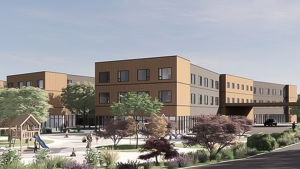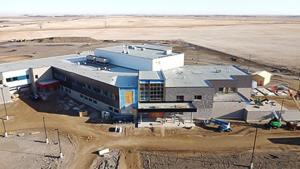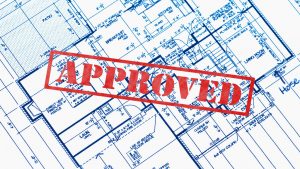Just how big is a 400,000 cubic metre mound of dirt? Big enough to spread over about 10 football fields (or a 60,000-square-metre area) to a depth of 13 metres.
Just how big is a 400,000 cubic metre mound of dirt? Big enough to spread over about 10 football fields (or a 60,000-square-metre area) to a depth of 13 metres.
That’s how much contaminated soil has to be removed from the TTC Light Rail Train yards being excavated at Leslie St. and Lake Shore Blvd. in Toronto’s east end.
“It is one of the largest excavations since the Metro Toronto Convention Centre,” according to Paul Borrelli of GFL Environmental.
The $51-million (including taxes) soil remediation and soil capping job is a joint venture of EllisDon and GFL Environmental.
The job, which started in April, is slated for completion early next year.
Borrelli said that to meet the schedule, GFL’s objective is to remove 2,000 cubic metres per day.
That will require 60 truck trailers containing about 40 tons each.
For an inner city neighborhood in Toronto, that is a really big amount of soil, he said.
To minimize traffic disruption in the east-side neighborhood, the joint venture developed a traffic plan for trucks coming and going and has built a staging area on site for loading.
The site itself poses challenges for heavy equipment because the land — once part of Lake Ontario — was covered with fill in the 19th and early 20th centuries.
To keep heavy equipment (including John Deere 450 excavators, plus D6 and D8 dozers) from bogging down, access roads made of compacted gravel are being built.
A temporary sediment-control pond with a geosynthetic clay liner will be constructed to manage water during construction, added Borrelli.
The joint venture also has a noise-monitoring program and the site is bordered by 1,100 linear metres of engineered noise-reduction hoarding, which also prevents contaminants leaching.
Loaded trucks heading to the landfill pass through a wash station first to ensure contaminated materials aren’t spread on public streets.
Once the mound of contaminated soil is removed, rammed aggregate piers will be installed to improve bearing capacity of the ground prior to capping the site with clean soil.
The ground improvement job is being done by GeoSolv Design/Build.
A rammed aggregate pier (RAP) is made by driving a 40-50-foot long hollow mandrel (a large hollow shaft with a tamper foot at the bottom) into the ground to the specified design depth.
Crushed stone is poured through a hopper down the mandrel, which is pulled up and rammed down a number of times to create stiff RAPs and to strengthen the soil, said Mark Tigchelaar, president of GeoSolv.
“Essentially, through this process we laterally stress the surrounding soil and introduce this heavily compacted granular pier. By increasing the lateral stress, surrounding the rammed aggregate pier, we can increase the amount of load that the soil mass can support,” he said.
The granular piers also provide radial drainage for pore water pressure in the soil, which helps to speed soil settlement when preloaded and/or surcharged, explains Tigchelaar.
GeoSolv will be installing thousands of RAPs — one of the largest projects the company has completed, he said.
Where the main TTC building will be constructed on the site, the company will introduce grout into many of the RAP elements as well to add additional stiffness to the piers.











Recent Comments
comments for this post are closed